ASUS Zenbook Pro 14 OLED review: good-looking performer is a MacBook Pro rival
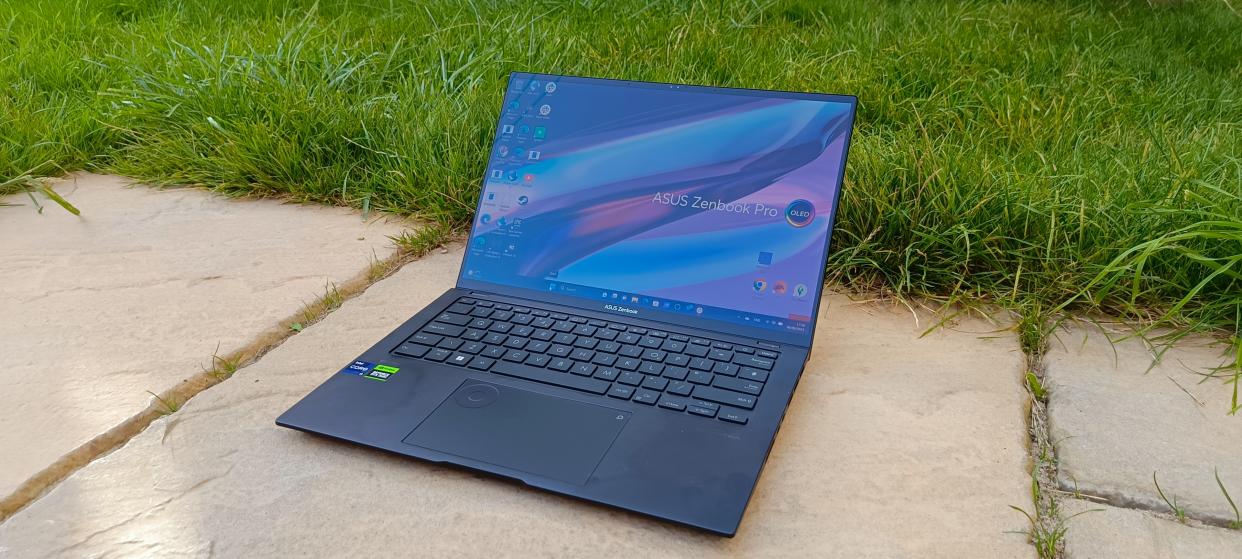
The ASUS Zenbook Pro 14 OLED comes burdened with not the weight of its components (it's fairly light at 1.6kg), but rather the expectation created by its close cousins, the Zenbooks Pro 16X, 15 and S 13. The larger two have recently impressed us greatly with their impressive power, inventive ergonomics and gorgeous OLED screens, and the ultra-lightweight S 13 OLED even won our Small Laptop Of The Year award at the CB Awards 2023 (with that same screen too, just smaller).
So does the Pro 14 fill a need that's not already covered by this wide lineup of creative-friendly laptops from ASUS? I got a sample in for review over a period of several weeks, to see whether it could compete for a spot on lists like our one for the best laptops for photo editing, and while it doesn't quite hit the heights of ASUS' StudioBook, the Zenbook Pro 16X or even the Pro 14 Duo (with its ingenious second screen), it fully deserves its place alongside its impressive siblings in the constantly expanding ASUS lineup.
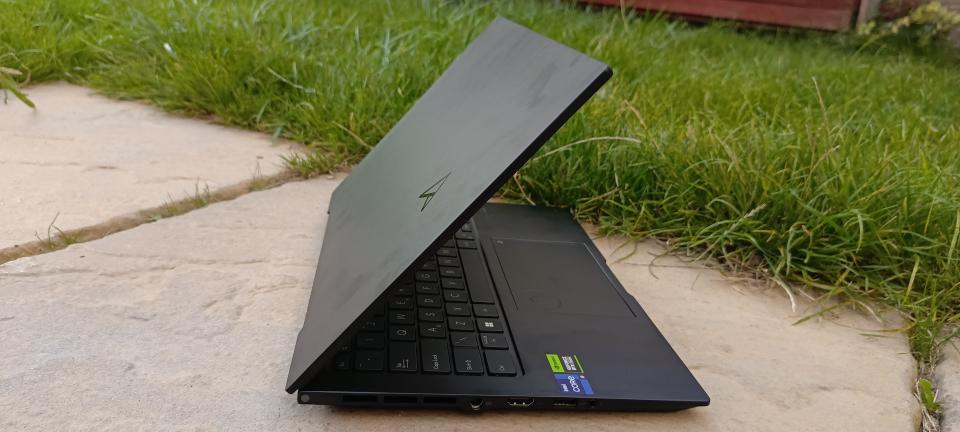
ASUS Zenbook Pro 14 OLED review: Key specs
ASUS Zenbook Pro 14 OLED: Design and build

On the outside, the Zenbook Pro 14 looks very similar to the bigger Zenbook Pro 16X, with its sleek black casing and a small ASUS logo neatly carved into the lid. Open it up, and a similar story emerges, although we don't get the snazzy lift-up mechanism from the 16X that raises the keyboard to allow more airflow into the vents (and lean the keyboard toward the user). Instead, the back of the lid protrudes slightly out from the back of the body, so lifting the lid with the laptop sat on a table lifts the bottom so the fans underneath get better access to air (and angles the keyboard ever-so-slightly toward the user).
Another thing it does (sort of) borrow from its bigger sibling is the ASUS dial, the brilliant creative addition that contributed to making the 16X my new favourite laptop. It's not a dedicated touch dial here, though, but instead folded into the top-left of the trackpad, activated (and deactivated) by a click in the top-right of that same trackpad.
The keyboard is a backlight chiclet offering, with 1.4mm travel, and a comfortable enough typing experience for me, a lifelong fan of big external mechanical clackers.
The trackpad is really nice and responsive too, and the aforementioned dial offers an immediate promise of comfortable creative-work ergonomics.
The star of the show here is the screen, though. Even though it's smaller than the 15 or Pro 16X, this 14.5-inch 2.8K display feels bigger than it is, thanks to its brilliant colour coverage and vivid brightness (550 nits in HDR mode). It's a touchscreen too, with stylus and 10-point multitouch support. The response time is 0.2ms, you can crank the refresh rate up to 120Hz for gaming (or high-quality video-editing) and the colour quality (1.07 billion of them here) has earned it a Pantone validation, so it's ready to go for any travelling graphic designer or photo editor.
It weighs around 1.6 kilograms, so it's not a featherweight like the S 13, but still lighter and more compact than the 15 or 16X, and didn't feel too burdening when I was lugging it around for work on the go.
One design element I wasn't a huge fan of is fairly superficial, I'll admit, but the laptop is extremely smudge-friendly. After only a day with it, both the lid and the keyboard area had turned into Fingerprint City, and with the smooth Tech Black colour across the entire construciton, it shows up very clearly (the pictures accompanying this review show it after treating it with my finest soft cloth).
ASUS Zenbook Pro 14 OLED review: Features
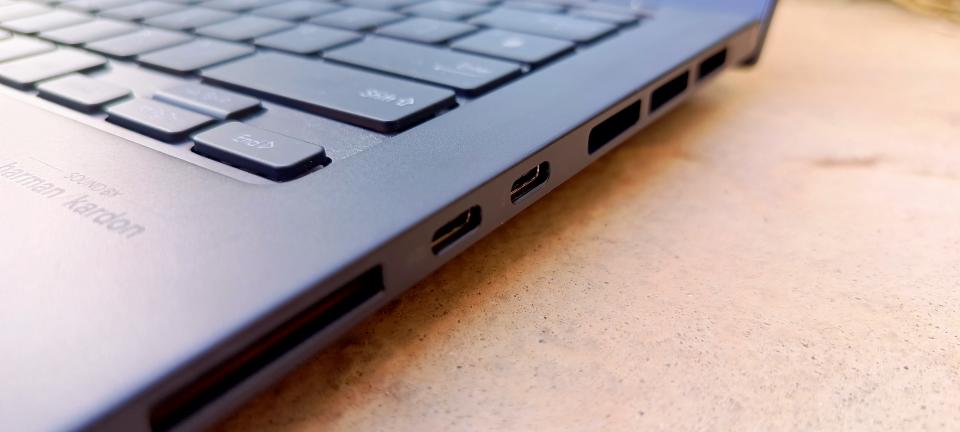
The good people at ASUS have earned my respect for paying attention to one thing a worrying number of laptop makers seem to neglect: ports.
There's a USB-A, USB-C 3.2 and a Thunderbolt 4 port here, along with one HDMI 2.1 port, a dedicated DC-in port, an audio jack and even an SD card reader built-in. It's enough for me to plug all my desired day-to-day peripherals in, and the Bluetooth 5.3 wireless card had no trouble connecting to my wireless keyboard, mouse, speakers and headphones as needed.
The webcam is a Full HD one, with IR function to support Windows Hello face-recognition, an additional security feature that I find really useful for protecting sensitive work files when hot-desking in an office or taking it along with me for work on the go.
The speakers are developed in cooperation with Harman/Kardon, and even though I almost never recommend native laptop speakers, I found them at least closer to decent here than in many other recent laptops I've tested. There is a noticeable lack of depth and bass, though, but mids and highs are decently served here.
On the inside, I found a suite of creative-ready apps included: MyASUS helped me set up several system features to my liking, while the ProArt Creator Hub allows creative users to customise and set up the ASUS Dial functions and more.
ASUS Zenbook Pro 14 OLED: Performance
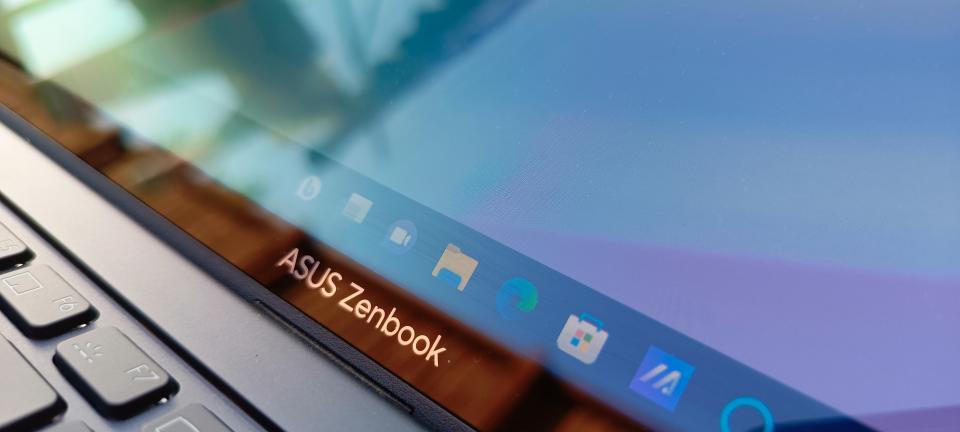
It may not look like it at a quick glance, but the ASUS Zenbook Pro 14 OLED is a fun-sized little powerhouse. It handily matches the MacBook Pro 14-inch M2 in Geekbench 6 CPU testing, and the GPU score is fairly impressive too.
It also sported hugely impressive scores in both PCMark 10 and Cinebench R23 testing, highlighting just how capable a video editor and graphic design machine this is.
Most importantly, I had no problems with my work on it, running Photoshop along with several other programs without much lagging or slowdown, though the fans did kick in. It never got perilously hot, though, and I also found I could easily run big games on it, including Forza Horizon 5, No Man's Sky, Cyberpunk 2077 and several others, although I did hook a second bigger monitor up for gaming as I prefer that to 14-inch laptop screens in general. However, with the joyful brightness and sharpness of the OLED here, I happily watched TV and films on it.
The performance comes at the price of battery life, though. ASUS claims the Zenbook can last for up to 10 hours on a single charge, the reality is that you won't reach that if you want to get meaningful work done. While I could run a streaming video for almost 8 and a half hours on a single charge, I had to reach for the plug socket over an hour before I could finish one busy workday on battery power.
ASUS Zenbook Pro 14 OLED review: Price
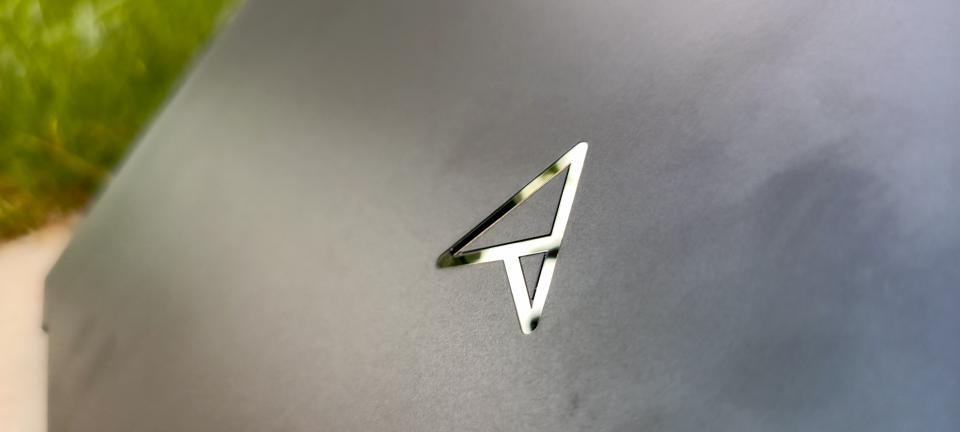
And now for the bad news. The ASUS Zenbook Pro 14 OLED isn't cheap. It comes in at $2,099 for the touchscreen version (you can get a non-touchscreen one for $1,799) in the USA, and the UK sees it hover around the £2,000 mark too. That's a lot of money for a laptop, even a good one, so this marks it out as exclusively a machine for professionals (or if you're an extremely well-off student in the creative industries). However, this is comparable or even less than the MacBook Pro M2, and that one has a slightly smaller, non-touchscreen.
Should I buy the ASUS Zenbook Pro 14 OLED?
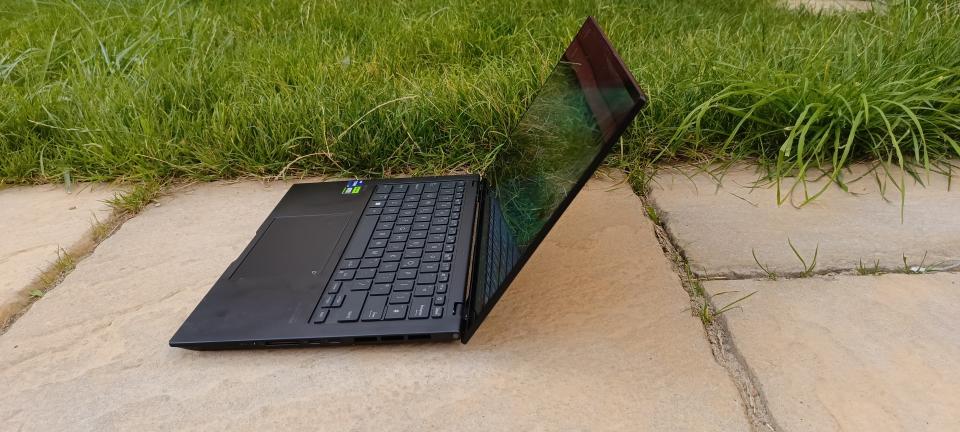
The ASUS Zenbook Pro 14 OLED forms part of an expanding lineup at ASUS, with 13, 14, 15 and 16-inch variants of the Zenbook available now. Where this particular model places its flag is not among them, though, but rather in the territory habitually claimed by the 14-inch MacBook Pro M2 as one of the very top choices for a photo-editing or video-editing laptop. It comes in slightly cheaper than that one in its top-spec, its performance is fully on par with that one, and the screen is (slightly) bigger and better (and is a touchscreen). So unless you prefer the macOS ecosystem, I'm running out of reasons to not go for this one over its Apple rival.

